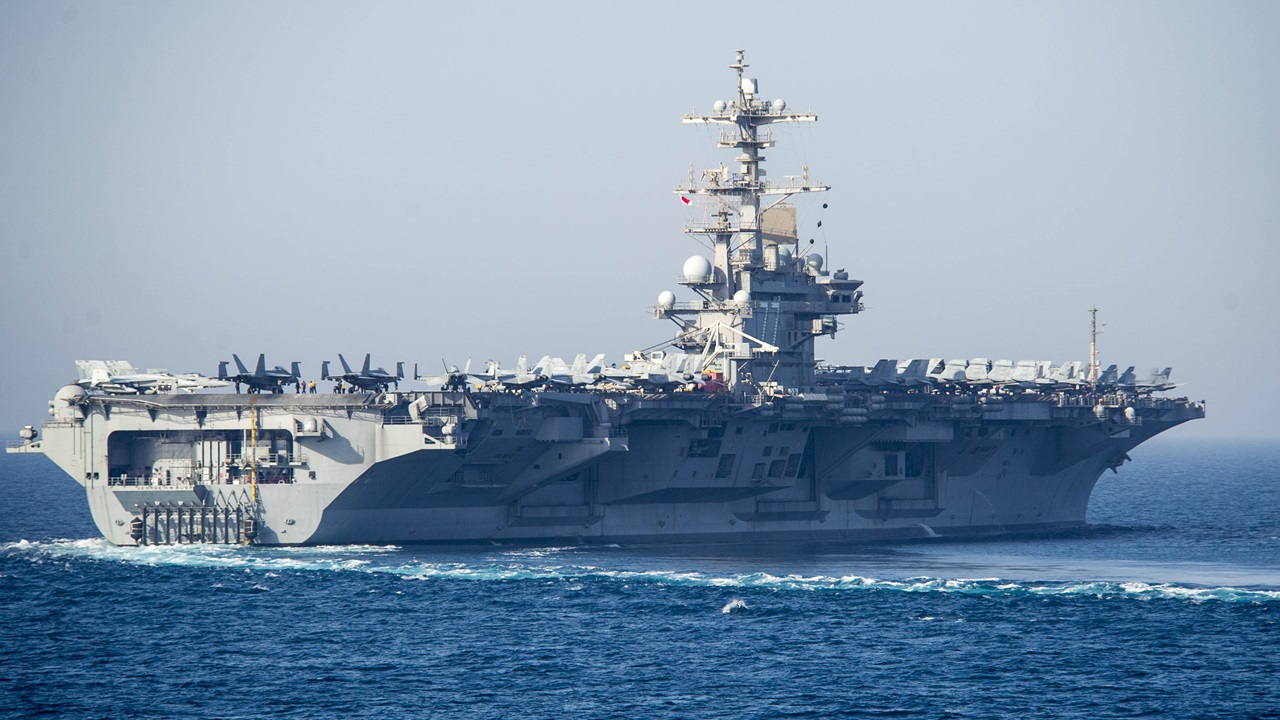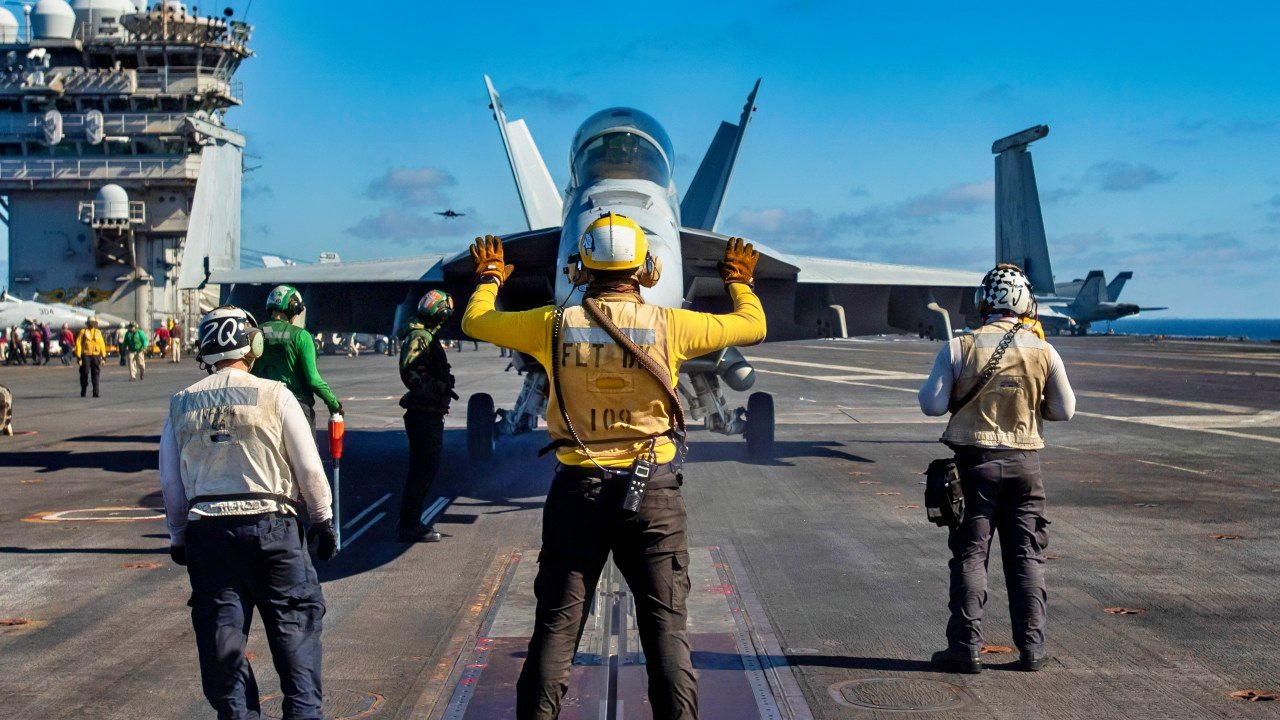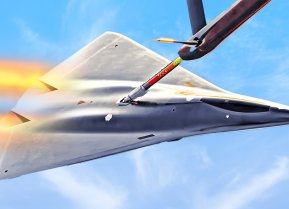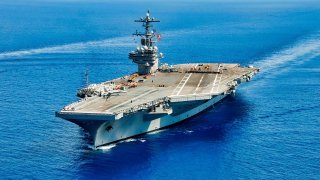You Are Staring at the Best Navy Nimitz-Class Aircraft Carrier Ever
The USS George H.W. Bush (CVN-77) is the tenth and final Nimitz-class aircraft carrier in the U.S. Navy, commissioned in January 2009. Named after the 41st U.S. President, a former naval aviator, the carrier incorporates significant technological advancements over its predecessors.
What You Need to Know: The USS George H.W. Bush (CVN-77) is the tenth and final Nimitz-class aircraft carrier in the U.S. Navy, commissioned in January 2009. Named after the 41st U.S. President, a former naval aviator, the carrier incorporates significant technological advancements over its predecessors.

-Powered by two nuclear reactors, it boasts an enlarged flight deck, improved catapults, and arresting gear, enhancing flight operations for aircraft like the F/A-18 Super Hornet and E-2 Hawkeye. Beyond serving as a floating airbase, it features advanced radar, communications, and electronic warfare systems.
-The carrier also prioritizes crew welfare with modern living quarters. Since commissioning, it has participated in key military and humanitarian missions, reinforcing America's global naval presence.
USS George H.W. Bush: The Last and Most Advanced Nimitz-Class Carrier
America is an aircraft carrier superpower. That’s how it’s been since 1945, when no navy in the world could challenge the United States Navy in surface fleet operations, especially when it came to naval aviation. The Soviets didn’t even try, instead focusing on its nuclear battlecruiser fleet and submarine force.
Of course, today these dynamics are changing, and the United States Navy, with its fleet of ten Nimitz-class aircraft carriers and its growing force of Ford-class carriers, has yet to get this message. Still, it’s important to understand the primacy that America’s carriers conferred upon the Navy’s surface fleet.
One carrier stands out. The final Nimitz-class aircraft carrier was commissioned in January of 2009. The USS George H.W. Bush (CVN-77) is named after one of the most consequential American presidents of the modern age, George Herbert Walker Bush.
The keel for the great warship was laid down at Northrop Grumman Newport News in September 2003. CVN-77 incorporates some major improvements compared to its predecessors in the Nimitz-class line.
These advancements were the outcome of years of improvement in maritime technology as well as U.S. naval strategy. Thus, until the recent deployment of the USS Gerald R. Ford (CVN-78), the first of its class, the USS George H.W. Bush was the most technologically advanced and capable aircraft carrier in the U.S. Navy fleet.
Like the rest of America’s carrier fleet, the USS George H.W. Bush is powered by two nuclear reactors. These power sources provide virtually unlimited endurance and range, meaning that America’s global navy can truly be global. It can stay on station in distant regions of the world, ensuring a seemingly permanent power projection capability for the Navy, which plays significantly into America’s overall strategy of deterrence.
A carrier’s primary role is as a floating airbase, and the George H.W. Bush optimizes aircraft operations as never before. It features an enlarged flight deck, along with better catapults and arresting gear, making its onboard flight operations more efficient than any previous carrier in the fleet. Indeed, many of the hard lessons learned from the carrier operations of the George H.W. Bush were then applied to the even more advanced USS Gerald R. Ford.
CVN-77 operates an assortment of advanced fixed-wing and rotorcraft. These include the ubiquitous air superiority fighter for the U.S. Navy, the F/A-18 Super Hornet, as well as the EA-18G Growler and the E-2 Hawkeye.
More Than a Floating Airbase
But this flat top is more than just a floating airbase. It has some of the most advanced radar and communications systems. CVN-77 comes equipped with the most advanced electronic warfare capabilities, too.
All these systems, operating together, expand the carrier’s ability to detect, track, and engage threats effectively – and at farther ranges than most other carriers in America’s fleet.
Another unique aspect of this boat when compared to older Nimitz-class ships is the improved living conditions for the crew. Indeed, the warship features state-of-the-art living quarters by Navy standards, improved medical facilities, and modern recreational areas. These advances were made to increase the combat efficiency of the crew by ensuring they were all well cared for and comfortable so that when action stations were called, the crew was operating at peak efficiency.
Ever since her commissioning 15 years ago, the carrier has been engaged in multiple missions of strategic importance for the United States. She’s been to the Middle East multiple times during America’s two wars in Iraq and Afghanistan.
What’s more, the George H.W. Bush has been party to the iconic RIMPAC exercises in the Pacific repeatedly. Beyond these important military missions, it has participated in multiple humanitarian missions around the world, enhancing their operational capabilities and expanding the scope of America’s global soft power.

Author Experience and Expertise: Brandon J. Weichert
Brandon J. Weichert, a National Interest national security analyst, is a former Congressional staffer and geopolitical analyst who is a contributor at The Washington Times, the Asia Times, and The-Pipeline. He is the author of Winning Space: How America Remains a Superpower, Biohacked: China’s Race to Control Life, and The Shadow War: Iran’s Quest for Supremacy. His next book, A Disaster of Our Own Making: How the West Lost Ukraine, is due October 22 from Encounter Books. Weichert can be followed via Twitter @WeTheBrandon.
All images are Creative Commons or Shutterstock.
From the Vault
Russia Freaked Out: Why the U.S. Navy 'Unretired' the Iowa-Class Battleships
Battleship vs. Battlecruiser: Iowa-Class vs. Russia's Kirov-Class (Who Wins?)


